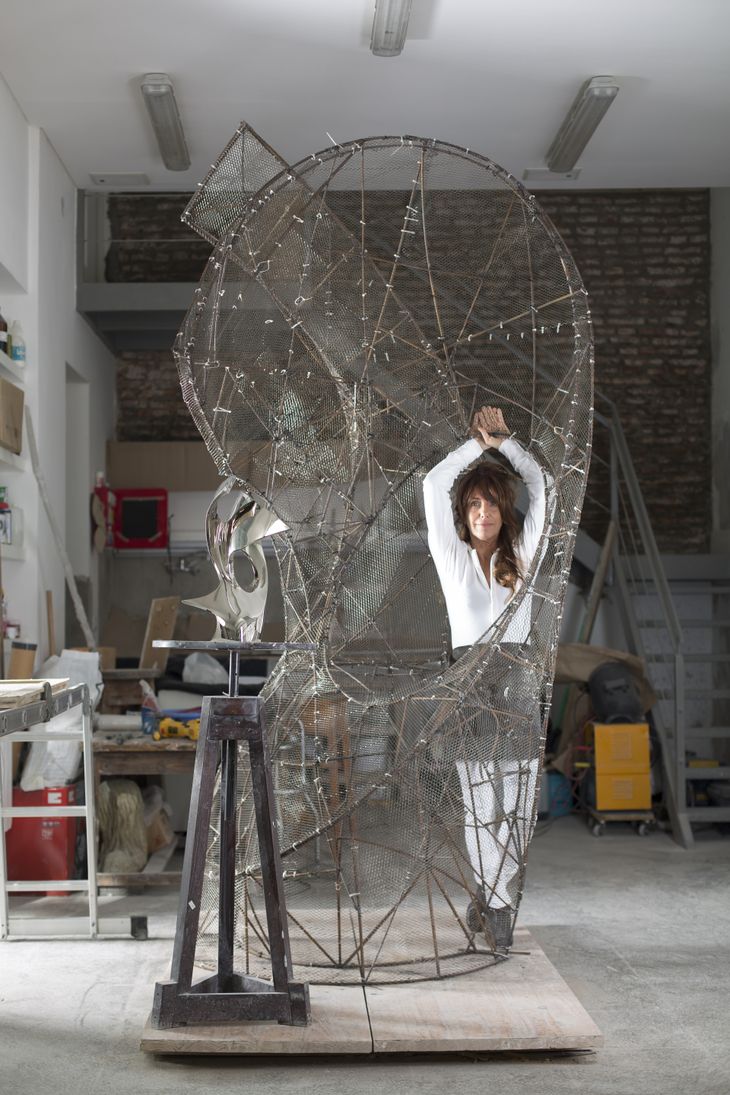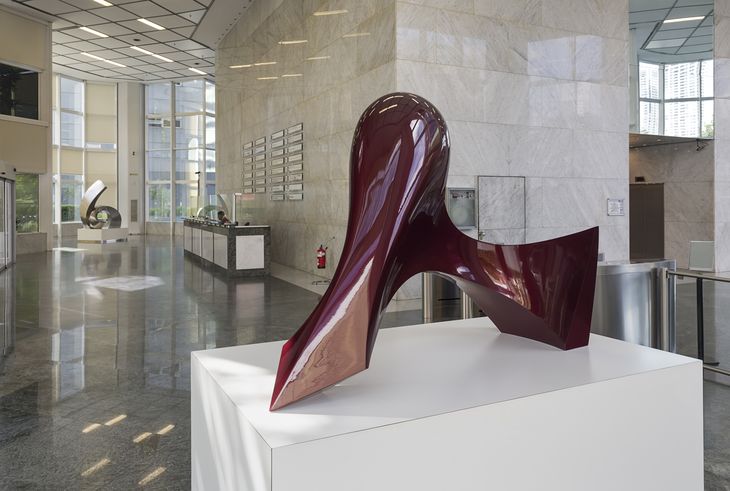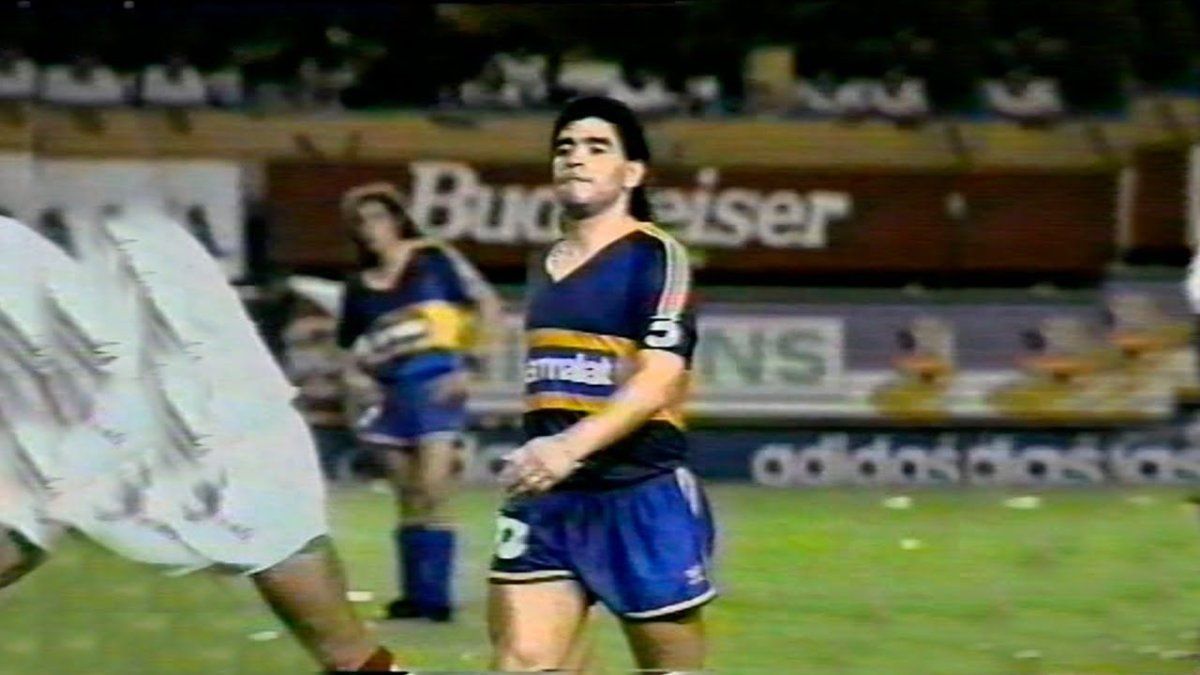He trained at the National School of Fine Arts of our country; in Statuaria Arte, Carrara, Italy, and in workshops of renowned sculptors such as Leo Vinci, Aurelio Macchi, Miguel Ángel Bengochea and Beatriz Soto García. “There is”we limit in the dialogue “a background semiology: what the spectator chooses to see when he goes to the museum, or the gallery, and what appears to him without intending to, because it is in a public space”.
“It is true,” we continued, “that visiting museums abroad is part of the tourist attraction. They go to the Louvre and leave exhausted because they want to see everything in a few hours. “They fulfill that cultural superego.”
“Exactly, it’s not a real wish,” Boneo continues. “I am looking for public work is inviting, either because the viewer can interact with it, such as with a mirror, a transparency, a light, or a work that calls to enter because it intrigues to know what is inside. That does not mean that, from a classical point of view, emotion works, that it moves a hand, a gesture, a vein. But I’m interested in the interaction, whether it’s a boy going down a slide that is at the same time a sculpture, or contemplating Generic Floralis from Recoleta. Or music: one enters a work and a sensor, thanks to current technology, starts music, or the sound of rain. For me that is very important. Something that goes beyond visual perception, but first that perception must invite entry.”
Photo1.jpg
Among Boneo’s most notable works are the sculptures located in the Bouchard Plaza Tower, in the San Nicolás neighborhood, in Buenos Aires, “Big steel” (2015) and “Twenty nine” (2017) [Foto 1].
In 2022, it was installed “O’clock” in it Chacofi Buildingan office tower that is located in front of Plaza Roma, on Avenida Leandro N. Alem, with the collaboration of architects such as Julieta Figueroa and Gabriel Gatti Beize. “The work symbolizes the need to put an end to it and then continue”he notes Boneo.
“How are your works created? “First from a sketch”reply. “A sketch that already makes me imagine the work in a big way, and then breaking it down. When I break it I know I can enter [Foto 2: “En Punto” en su etapa de realización]. I begin to imagine them with mirrors, reflecting the viewer. They are born from the inside out, like a nest. I also imagine the materials, since each work requires different ones. If it is for public exhibition, the problem is that the materials are very expensive… of course, in the imagination, or in a model, everything is simpler.”
The materials, pardon the redundancy, transcend the material plane. “My creations”Explain “they are the result of a dynamic relationship with the inputs. The marble is cold and has almost healing properties in its dust, while the wood is warm and gives off its perfume with each intervention of a chisel and a hammer. The metal requires prior modeling work in clay which is then completed under the heat of fusion. The encounter of the tool with the elements generates adrenaline in me; “It is the music of carving, the sound of creation.”
“The creation process is spontaneous and sometimes full of errors and improvisations that I solve as I go”, keep going. “Each component has its own characteristic and decides the path to follow; It is a constant dialogue between the carving and me. The flexible rules are my favorites, they guide me in the concave and convex, while the chisel leaves its mark, marking the history in each work.”
Photo2jpg.jpg

Risks of public art
Public exposure always entailed risks. “Of course, always, and let’s not talk about vandalization but also about natural disasters. A little while ago we mentioned Floralis, which was damaged by last year’s storms. That is another problem: a work can have the public and private support necessary for its installation, and then? Who is responsible for its maintenance? Who is responsible? I pass by Figueroa Alcorta and cry, it is a shame to see how Floralis has turned out.”
About this way of exhibiting art, Boneo indicates: “The challenge I have as an artist for the next few years is to be able to participate in public works in Argentina, Europe and the United States. I believe that public spaces in our country are not as developed to receive the art of talented artists like those we have. The difficulties for this are clear and art does not occupy the importance it should in our country.”
Member of the Collective 62, a women’s artistic space and collective in Miami, Boneo will soon participate in two exhibitions in that city. “They will be at the Brickell Center”he tells this newspaper” “They coincide with the holding of Art Basel. Culturally, Miami is a city that exploded, especially after the pandemic: since taxes have dropped so much, many New Yorkers went there. I am working a lot in Miami even though I am going to keep my residence here, where I have my affections, my things. But sometimes you need to go out to take in other air, other facilities. Obtaining materials there is much easier. Painting a work in Miami costs less than doing it here. I will also do a show in Girona, Spain”.
We asked him what differences exist when it comes to public art between our country and others. “Many, unfortunately. In the United States, for example, everything becomes easier. The way is paved, taxes can be deducted. And be careful I am not talking about works in squares or public roads but in private buildings, it is the most common. In the buildings there are works, both paintings and sculptures. It is a pleasure to walk, see, compare; one building competes with the other for the quality of its works. The Brickell district I talked about is wonderful. “You look up and see friezes, colors, shapes.”
Boneoin response to another question, also points out the positive impact that the so-called “Street art”which consecrated artists such as Banksywhose identity remains an enigma. “It is wonderful. In the United States he is respected as a great creator. There are even closed streets to display street art. Let us also remember another master like Basquiat.”
The feminine
The female figure is a central theme in the artist’s work.. “I grew up in a feminine environment, with four sisters and a feminist mother. This environment imbued me with a deep respect and admiration for women, which is reflected in my sculptures. Alexander Archipenko was my great inspiration; His work ‘Woman Combing Her Hair’ led me to begin ‘My Women’, works that characterize feminine strength and intuition.
The step, as in other artists, went from the figurative to the abstract. “The figure of the feminine is almost permanent in my work and this theme permeates my work, in figurative and later abstract expressions. Many of my women are broken and different textures coexist in their material. Their rough parts show the traces of carving, of the tools that marked their bodies. Its softest parts are traces of sandpaper, of hard work. “That’s how we are, we know how to rise again because within us strength coexists with fragility.”
““Over the years I got to know my women.”complete. “They are not so fragile anymore; Although we do not lose that innocence, now they are strong women. From figuration I moved towards abstraction and understood that, between the concave and convex spaces of matter, the form already exists.. My recent work evokes the most intimate part of a woman, the clitoris, the maximum depth, the climax. Getting there is like entering the womb and returning to the origin, where we were formed and where we were born. An empty space that is filled, emptied and filled again; the fertile place for something to grow.”
Source: Ambito
I am an author and journalist who has worked in the entertainment industry for over a decade. I currently work as a news editor at a major news website, and my focus is on covering the latest trends in entertainment. I also write occasional pieces for other outlets, and have authored two books about the entertainment industry.




